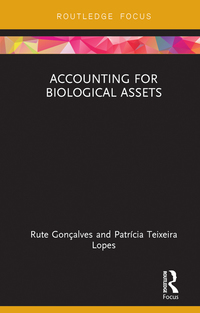Question
Ruiz Wholesalers operates at capacity and sells furniture items to four department-store chains (customers). Mr. Ruiz commented, We apply ABC to determine product-line profitability. The
Ruiz Wholesalers operates at capacity and sells furniture items to four department-store chains (customers). Mr. Ruiz commented, "We apply ABC to determine product-line profitability. The same ideas apply to customer profitability, and we should find out our customer profitability as well." Ruiz Wholesalers sends catalogs to corporate purchasing departments on a monthly basis. The customers are entitled to return unsold merchandise within a 6-month period from the purchase date and receive a full purchase price refund. The following data were collected from last year's operations and Ruiz has calculated the following activity rates:
Chain
| Chain | ||||
|---|---|---|---|---|
|
| 1 | 2 | 3 | 4 |
| Gross sales | $45,000 | $35,000 | $120,000 | $80,000 |
| Sales returns: Number of items | 107 | 41 | 55 | 51 |
| Sales returns: Amount | $9,000 | $5,500 | $8,400 | $7,000 |
| Number of orders: Regular | 35 | 155 | 60 | 80 |
| Number of orders: Rush | 9 | 52 | 15 | 35 |
Data table
Dialog content starts
| Activity | Cost-Driver Rate |
|---|---|
| Regular order processing | $22 per regular order |
| Rush order processing | $110 per rush order |
| Returned items processing | $10 per item |
| Catalogs and customer support | $1,400 per customer |
Customers pay the transportation costs. The cost of goods sold averages
80%
of net sales.
Requirement
Determine the contribution to profit from each customer last year. Comment on your solution.
Begin by completing the statement through gross margin for each chain. Then calculate the customer related costs and the contribution margin (loss) for each chain. (Round your answers to the nearest whole number. Use parentheses or a minus sign when entering a contribution loss.)
| Chain | 1 |
| Gross sales | 45000 |
| Sales returns | 9000 |
| Net sales | 36000 |
| Cost of goods sold | |
| Gross margin |
|
| 2 |
| 35000 |
| 5500 |
| 29500 |
|
|
| 3 |
| 120000 |
| 8400 |
| 111600 |
|
|
| 4 |
| 80000 |
| 7000 |
| 73000 |
|
|
| Customer related costs: | |
| Regular orders | 22 |
| Rush orders | 110 |
| Returned items | 10 |
| Catalogs and customer support | 1400 |
| Customer related costs | |
| Contribution margin (loss) |
|
|
|
|
|
|
|
|
|
|
|
|
|
|
|
|
|
|
|
|
|
|
|
|
|
|
|
|
|
|
|
|
|
|
|
|
|
Determine the formula to calculate the contribution margin (loss) percentage for each chain.
|
|
|
| = | Contribution margin (loss) percentage |
Now calculate the contribution margin percentage for each chain. (Round your answers to two decimal places, in the format X.XX. Use parentheses or a minus sign when entering a contribution loss.)
| Chain | 1 | 2 | 3 | 4 | ||||
| Contribution margin (loss) % |
| % |
| % |
| % |
| % |
Comment on your solution.
The analysis indicates that customers' profitability (loss) contribution
is consistent between customers
varies widely
. This is due to the
cost of goods sold percent
customer-related costs
sales return dollar volume
sales volume
.
Immediate attention to
Chain 1
Chain 2
Chain 3
Chain 4
is required which is currently showing a
high contribution
loss
. The chain has a disproportionate number of
both regular and rush orders
regular orders
returns
rush order
.
Ruiz
should work with the management of
Chain 1
Chain 2
Chain 3
Chain 4
to find ways to reduce the
cost of goods sold
number of orders
number of returns
sales volume
, while maintaining or increasing the
number of orders
number of returns
sales volume
.
Step by Step Solution
There are 3 Steps involved in it
Step: 1

Get Instant Access to Expert-Tailored Solutions
See step-by-step solutions with expert insights and AI powered tools for academic success
Step: 2

Step: 3

Ace Your Homework with AI
Get the answers you need in no time with our AI-driven, step-by-step assistance
Get Started


